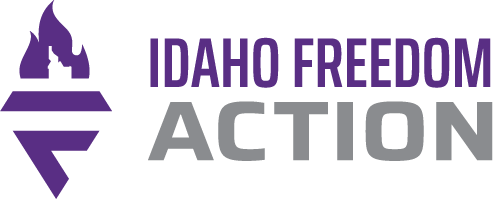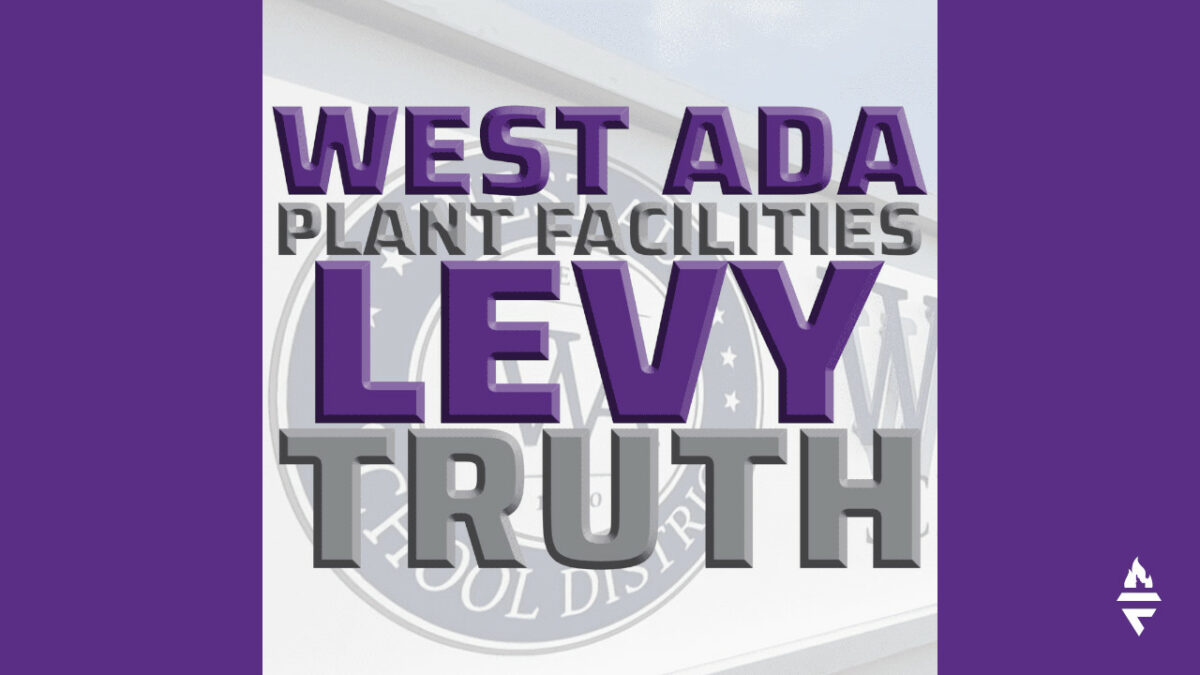West Ada’s levy: $500 million in questionable projects funded in a questionable manner
The West Ada School District’s property tax increase proposal is a cynical attempt to get a tax increase passed with the lowest possible threshold of voter support. The levy vote is on May 16. Instead of asking taxpayers to approve a 20 or 30-year bond, the district is asking for a 10-year levy. This means you’ll pay more in property taxes just to satisfy the district’s political objectives. Some of the projects would benefit school employees more so than students, and other projects have nothing to do with improving education outcomes.
What is the West Ada School District proposing?
The district is proposing to adopt a new plant facilities levy of $500 million that would cost taxpayers $50 million each year. The levy would be used to address what the district considers to be priority capital projects throughout the district. Many of the projects are not intended to improve academic excellence.
Are the projects proposed by West Ada absolutely necessary?
Arguably, the answer is no. While some of the expenditures identified are perhaps reasonable, others express “wants” instead of “needs.” For example, the district is proposing to spend property taxes collected on adding “natural light” to a building, replacing playground equipment, and fixing up a parking lot. The district also plans to use the money for a weight room and softball field.
More concerning is that the district is also proposing an expansion of its daycare center for school district employees. In other words, the district wants to tax property owners to pay for childcare that would exclusively benefit school staff.
How much of an impact would it have on taxpayers?
The plant facilities levy would raise property taxes by approximately $90 per $100,000 of taxable value for ten years. That means, for example, a home taxable value of $400,000 would see a property tax increase of $360 per year or $3,600 over the duration of the levy.
What is different about this proposal and previous proposals?
Previously, the district has used a bond to try to fund capital improvements and other facility expenditures. To pass a bond, a supermajority (66 ⅔%) must vote in favor of indebtedness. In contrast, the plant facilities levy only requires 55% of voters to vote in favor of indebtedness.
In addition, repayments of bonds are typically spread over 30 years compared to just 10 years with this proposed plant facilities levy. As a result, the cost per year to property taxpayers will be more than double. At a time when property taxes are already out of control, can property taxpayers afford to take on this expanded burden?
Why do those differences matter? Should taxpayers be concerned about this new approach setting a precedent for future proposals?
Lowering the threshold for indebtedness is dangerous. Property taxes are an especially onerous form of taxation, and given that off-year elections are likely to see an incredibly low rate of voter turnout, that means that just a small fraction of eligible voters could commit property taxpayers for debt that may not reflect the will of even a majority of voters.
Essentially, what the district is attempting to do is pass a bond without calling it one. Again, this sets a dangerous precedent. The reason that Idaho Code has such a high bar for passing bonds is that lawmakers have always recognized that taking on debt is no small thing and should only be done with the support of the vast majority of voters. In the absence of that overwhelming support, local property taxpayers shouldn’t be indebted.
Does the West Ada School District have other means of paying for necessary projects?
Yes. According to LeadMap.org, the West Ada School District has about $136 million in rainy-day funds. These are funds that are not obligated to any other purpose, for use in the event of an emergency or to pay for expenses not already budgeted.
Didn’t the Legislature just approve more money for school facilities?
Yes. The Legislature just approved new spending of $100 million for public schools to be used for facilities needs. The way the legislation (House Bill 292) was drafted gave large districts the biggest percentage of the funds.
As the largest school district in Idaho, WASD will receive in excess of $15 million from this appropriation alone. New funds that are intended to address the very needs WASD is claiming that this proposal would pay for.
What about federal funds?
WASD doesn’t like to talk about the tens of millions of dollars of “new money” that has been appropriated from the federal government. The ESSER funds (COVID money) for WASD was nearly $50 million of which nearly $20 million remain unspent.
Does WASD really need this money?
No. While WASD leadership is more fiscally responsible than its surrounding districts, the need for this property tax hike is just not there. Clearly, between the existing federal funds, new state funds, a massive reserve fund, and other sources of funding, WASD could forgo this levy and still be able to fund many of its top priority projects. Is now the time to be burdening property taxpayers, especially when the district is flush with money?
Election Day is Tuesday, May 16. To find your polling location, visit https://gisprod.adacounty.id.gov/apps/electionday/

